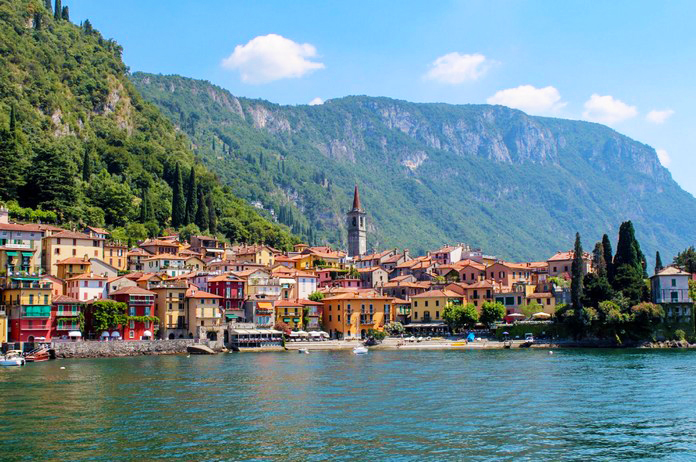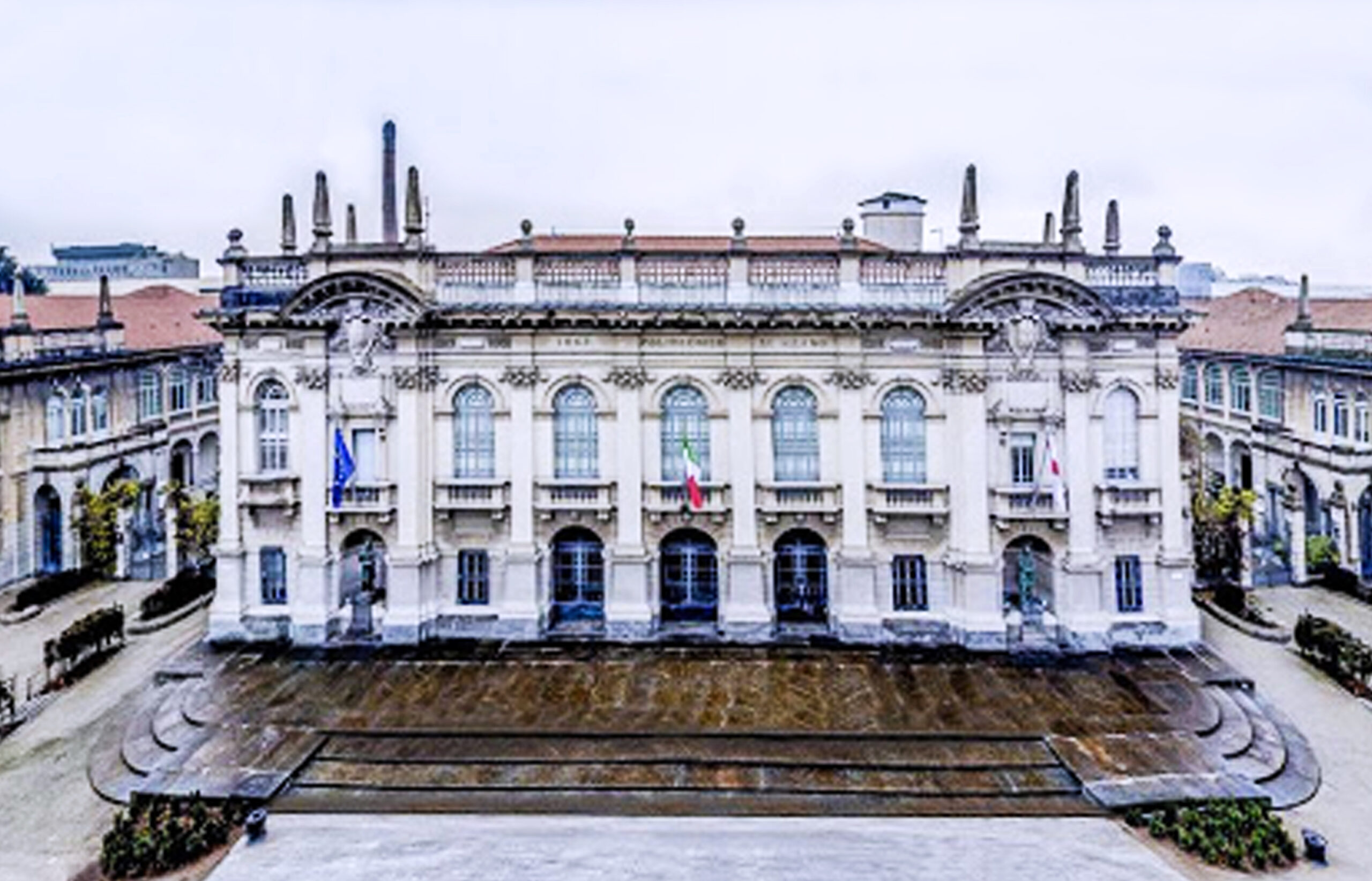The inherent beauty of Italy’s architecture and landscapes has made it picture perfect for the canvases of painters and the ideal film set for countless movies. While everyone will immediately recognize images such as the canals of Venice or the Colosseum in Rome, this week we take you to lesser known towns and villages that could have come right from the pages of a fairytale.
Menaggio is one of many small towns located on Lake Como in the Lombardy region. The picturesque town of ancient origin has vibrant streets lined with small boutiques and artisanal shops. Piazza Garibaldi is a marvelous place to have an espresso or gelato while enjoying an awe-inspiring view of one the most beautiful lakes in the world. It is also the start of the elegant lake promenade and the perfect place for a relaxing walk, where you can also board boats that will take you to the other pearls of Lake Como, such as Bellagio and Varenna.
In the sparkling blue waters of Lake Iseo, 25 miles east of Lake Como, you will find Isola di Loreto. Originally the island housed a convent, but in the early 17th century, Cardinal Federico Borromeo learned that there was also a male “hermit” secretly living on the island. The Cardinal became so angry that he closed the convent. The hermit left on his own accord sometime thereafter. Like a fairytale come to life, the small island is set amidst the dramatic background of snow-capped mountains and features a 19th century neo-Gothic castle perched on the edge of a cliff, with plenty of greenery, two lighthouses and a marina. Outside of rare and special occasions, the owner of this private island currently does not permit visitors, thus the island can only be admired from the water.
The walled city of Urbino in northern Le Marche was the center of culture during the Renaissance in the 15th century. The court of Federico da Montefeltro became so famous that even after his death people continued to flock to Urbino. Many famous painters and architects including Federico Barocci, Donato Bramante, Sandro Botticelli and Raffaello Sanzio were born there. Towering castles, such as the Ducal Palace, whose spires reach dizzying heights, remain from that era. Somewhat difficult to get to, you will find few tourists in this UNESCO World Heritage Site, but it is well worth the effort.
About 12 miles to the north of Urbino, the dramatic castles of San Marino perch themselves on the pinnacles of sharply sloped Mount Titano. San Marino is not part of Italy, but it is the world’s oldest independent republic. Encircled by the regions of Le Marche and Emilia Romagna, the ridges and hills present a captivating sight. The lovely countryside is upstaged by the three impossibly-positioned castles on successive peaks. The republic retains some intriguing pomp and ceremony, such as the changing of the guard in front of the Palazzo Pubblico. The easiest way to arrive in San Marino is by cable car, which only adds to its charm.
Montone is a walled village in the Province of Perugia in the region Umbria. Seemingly invisible to tourists, it is impossible not to love this authentic and preserved medieval gem. Situated on top of a hill 1,600 feet above the sea level, it overlooks the confluence of the Tiber and Carpina Rivers. Surrounded by imposing walls and stately towers, the magnificent Rocca di Braccio hints at the village’s past importance. Rocca d’Aries, an imposing castle, is another important building that has been returned to its ancient splendor after painstaking restoration work. The town reached its maximum splendor in the 15th century under Braccio da Montone. The great military commander became the Lord of the Umbrian cities Todi, Narni, Orvieto and Terni, after which, he audaciously, but unsuccessfully attempted to create his own independent state.
In northern Lazio near the Umbria border is the astounding town of Civita di Bagnoregio, which for centuries has defied the odds and hangs on despite having been dubbed il paese che muore, “the dying town.” Occupying a small tufa mesa amid weather-sculpted canyons, the unique landscape emphasizes the dramatic island-like effect of the town. This is especially true when the mist rolls in, giving the impression of a town floating among the clouds. Civita can only be reached by a long footbridge. First inhabited over 2,500 years ago, many residents moved out after an earthquake in 1695. Now, more than three centuries later, Civita retains an untouched, medieval feel. Most who own property in the town use it as a weekend getaway and today it only has about a dozen permanent residents.
The Garden of Ninfa is an Italian natural monument located just outside Cisterna di Latina, in the region of Lazio. It is a 260 acre park, but it is the 20 acres of landscaped grounds that has been called the most romantic garden in the world. During the Middle Ages, Ninfa had more than 150 houses, a century church, castle and town hall. It was encircled by a wall 4,500 feet in length. The garden was created by nobleman Gelasio Caetani, who later became the Italian Ambassador to the United States. Beginning in 1921, he restored the building to create a summer residence and planted many different plant species that he brought from his travels abroad. The site is open to the public at set times from April to November.
Study Abroad at Italian Universities
The Valle d’Itria zone in Puglia holds an architectural treasure called the trulli. The rustic whitewashed homes are surmounted by conical roofs made from stacked stones without the use of mortar. A UNESCO World Heritage Site, the town of Alberobello has more than 1,000 trulli. The fairytale dwellings are not only used as homes, but as shops, restaurants and tourists even have the option of staying in one. Its Museo del Territorio is located within ten trulli and details the building techniques and history of the area.
Matera is one of the most captivating towns in southern Italy. The 2019 European Capital of Culture and UNESCO site is one of the oldest inhabited cities in the world. The city of stone is set in a canyon carved out by the Gravina River and offers spectacular views that can be enjoyed from the maze-like pathways and narrow streets that make up Matera. The town is most famous for its famous sassi, ancient cave-homes that were carved directly into the rock of the surrounding hills.
The striking Castello di Venere in Erice was built 2,500 feet above the western Sicilian coast. The 12th century castle was built over a temple to the goddess Venus and the clouds that often swirl around it are known as ‘the kisses of Venus.’ The castle’s rooms are not open to the public, but visitors can explore the grassy interior courtyard. Stealing the show are the spectacular panoramic vistas extending to San Vito Lo Capo on one side and the Saline di Trapani on the other. Make sure to take the cable car to reach the top of this Sicilian fairytale location.





